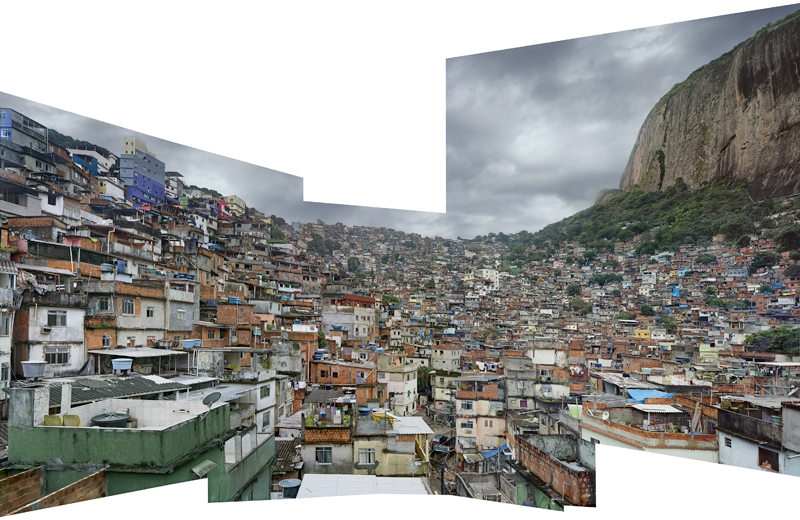ArtReview sent a questionnaire to artists and curators exhibiting in and curating the various national pavilions of the 2015 Venice Biennale, the responses to which will be published daily in the lead-up to the Venice Biennale opening.
Bjorn Geldhof is the curator of the Ukrainian pavilion. The pavilion is on Riva dei Sette Martiri.
What can you tell us about your exhibition plans for Venice?
The new situation in the country forced me to think differently about how to present Ukraine in Venice. To work in a beautiful old palazzo seemed wrong now since the country is fighting to renew itself.
Instead we propose a temporal, completely transparent glass pavilion on the Riva dei Sette Martiri. It expresses, as our title, Hope! for a new Ukraine, a Ukraine that is transparent and is reaching out to the world.
My selection of seven young Ukrainian artists is a choice for a new generation, most of whom started their work through political activism in the 2004 Orange Revolution
My selection of seven young Ukrainian artists is a choice for a new generation, most of whom started their work through political activism in the 2004 Orange Revolution. For more than ten years they have engaged themselves with establishing civil society in Ukraine. Their artistic practice is defined by a critical attitude, dealing with urgent concrete situations that impact society as a whole.
The works in the pavilion keep this critical attitude and refuse a partisan position. At the same time they are marked by a deep personal commitment to the current state of the country. They voice hopes for our future and confront Ukraine’s recent history and current situation.
Are you approaching this show in a different way as to how you would a ‘normal’ exhibition?
Venice is a very unique context that demands a specific approach, negotiating between the contexts of Venice itself, the specific location and the question of how to present Ukraine in a relevant way.
What does it mean to ‘represent’ your country? Do you find it an honour or problematic?
To represent Ukraine today is very important and undoubtedly an honour. But foremost I believe it is a big responsibility. Presenting Ukraine now is to present a New Ukraine. A country that tries to shape itself to become a modern, transparent country while fighting several battles at once: against widespread corruption throughout the political-administrative system, against Russian troops in the East and against economical hardship among all its citizens. It means presenting a country that promised change to the world but needs the world’s help to survive. And yet it also means presenting a feeling shared throughout the country: ‘Hope!’
How are you approaching addressing the different audiences who come to Venice – the masses of artist, gallerists, curators and critics concentrated around the opening and the general public who come through over the following months?
I try to make a strong and relevant exhibition. If this exhibition is relevant and convincing it becomes for both professionals and a larger public a ‘must see’. Through its location on the Riva dei Sette Martiri I hope that we will attract large audiences.
What are your earliest or best memories of the biennale?
I am still quite young so my memories don’t go back that far. I made my first exhibition in Venice in 2009 with the Belgian artist Jan Fabre in Palazzo Benzon on the Canal Grande. It was an amazing experience and remains a wonderful memory. Since then I have been lucky to make a new exhibition with every edition of the Biennial. The last editions we have presented with the PinchukArtCentre the Future Generation Art Prize (in 2011 and 2013) and now the Ukrainian Pavilion is organized by the PinchukArtCentre and supported by the Victor Pinchuk Foundation. I hope that this project will become my best and fondest memory!
You’ll no doubt be very busy, but what else are you looking forward to seeing?
As everybody I am very keen to see the work of Okwui Enwezor. Further more I look forward to the work of some of my Belgian collegues: Phillipe Van Cauteren is curating the Iraqi pavilion (and perhaps facing a similar challenge as I) and the Belgian pavilion of course.
How does a having a pavilion in Venice affect the art scene in your home country?
Ukraine needs to be presented in an international context more than ever. This support of the awareness about Ukraine and its potential to the world will hopefully have a positive effect for the future of Ukraine. But when talking about the direct impact it will have in Ukraine, it is hard to answer. In one hand art community has been always following all projects of the country in Venice. At the same time nowadays many Ukrainians do not have the means to travel any longer so they will perhaps not see the exhibition. But we are bringing a group of Ukrainian leading art journalists and TV groups so they can cover the Ukrainian pavilion and show it to Ukrainians.
Read all responses to the Venice Questionnaire 2015 edition published so far
Read all 30 responses to the Venice Questionnaire 2013 edition
Online exclusive published on 6 May 2015.
